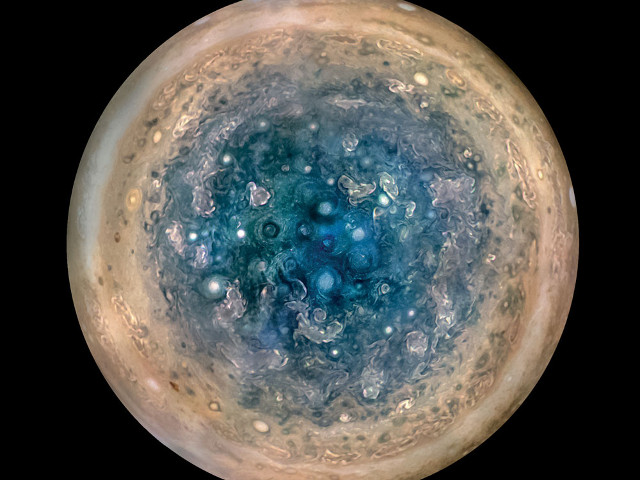
An article published in the journal “Nature Astronomy” describes a research on the auroras on the planet Jupiter. A team of researchers used ESA’s XMM-Newton and NASA’s Chandra space telescopes to observe the pulsations of Jovian auroras. The study shows that the auroras pulsate independently at the two poles, unlike what happens on Earth.
Astronomers found auroras in many places in the solar system and even beyond such as on brown dwarfs. The observations sought to establish similarities and possible differences with respect to the Earth’s ones. The auroras at the poles of the planet Jupiter are currently under observation from both the Earth and the orbit due to the presence of NASA’s Juno space probe. Close-ups detections are ideal but Juno doesn’t have any instruments to detect X-ray emissions of Jovian auroras so the observations carried out with the XMM-Newton and Chandra space telescopes completed them.
On the Earth, aurors mirror each other so when the one at a pole brightens, in general that also happens to the one at the other pole. The astronomers expected this to happen on Jupiter as well but they were surprised to find that the auroras at the South Pole pulsate every 11 minutes while those at the North pole do that in a chaotic way. The issue was even more mysterious thinking that the authors of the planet Saturn don’t emit X-rays.
The researchers mapped the X-ray emissions of Jovian auroras through observations carried out with the XMM-Newton and Chandra space telescopes between May and June 2016 and a previous one from March 2007. They could identify a hot spot in each pole covering an area much larger than the Earth’s surface. By studying them they found that they have very different characteristics.
There are various hypotheses about these differences in their behavior but the issue is complex because there are probably various processes in place. There’s the action of the solar wind that interacts with Jupiter’s magnetic field and it’s possible that the magnetic field lines produce with their vibrations waves that carry charged particles to the poles. Particle flows change speed and direction until they collide with Jupiter’s atmosphere and at that point generate X-ray pulses.
Other ions come from Io, one of the great moons of Jupiter where there’s a strong volcanic activity. Materials containing oxygen and sulfur ejected from Io reach Jupiter and they too are involved in various interactions with the solar wind and the planet’s magnetic field. The problem is to understand these interactions.
William Dunn, the article’s lead author, stated that further studies are needed to develop ideas on X-ray pulse production’s mechanisms. The combination of the observations that will be carried out by the Juno space probe and the XMM-Newton and Chandra space telescopes could provide new information that will be curcial to understand the mechanisms in place also on other celestial bodies where there are auroras.


